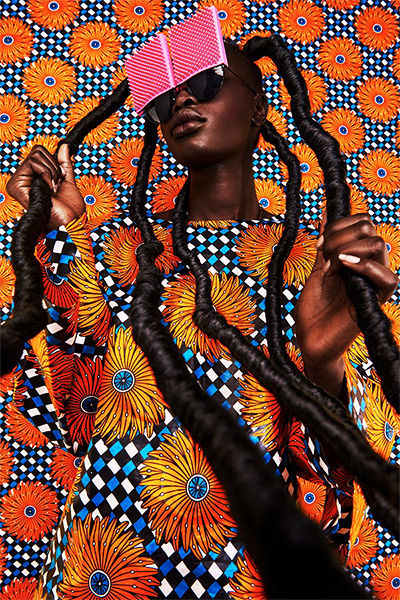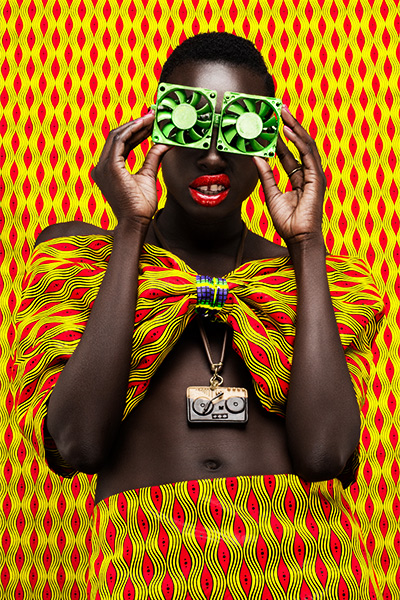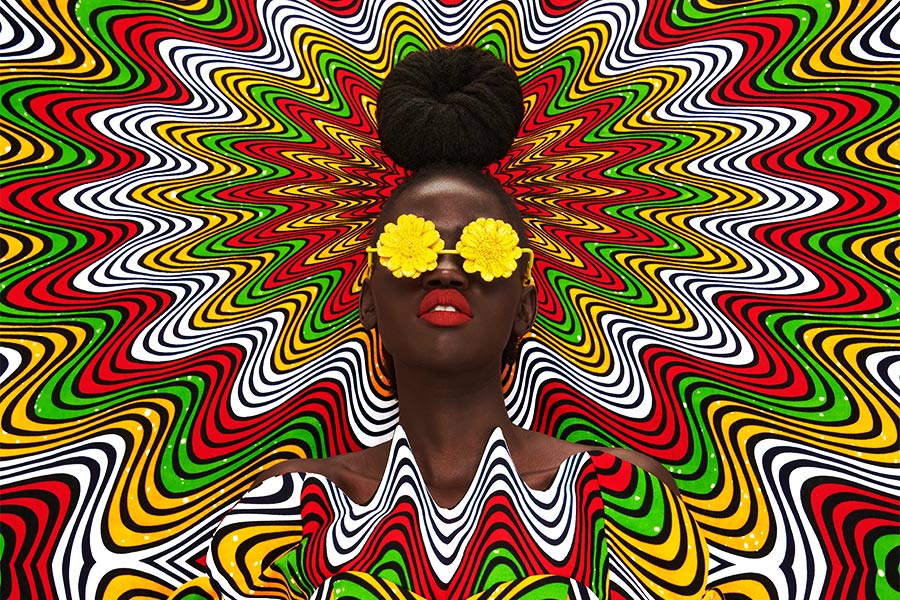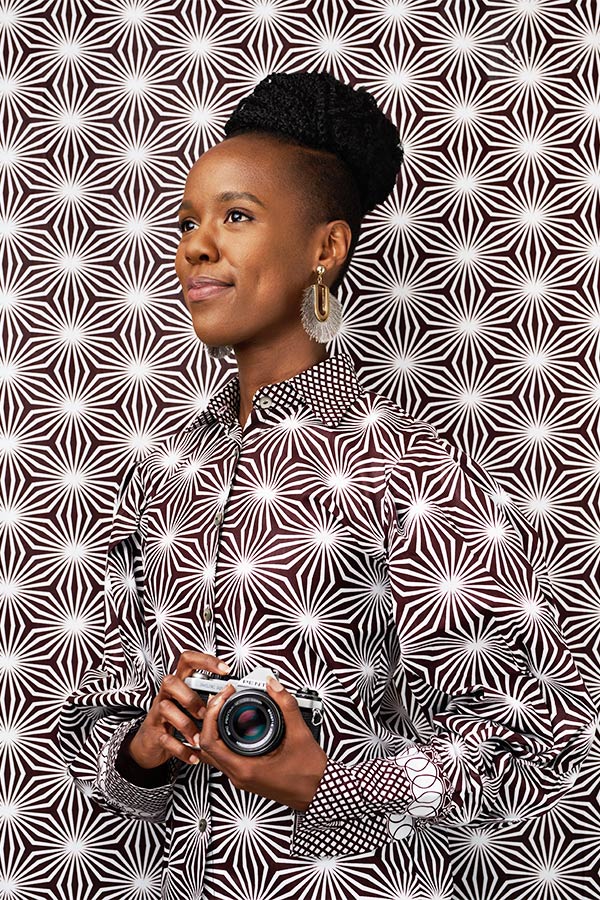Folk tales: Thandiwe Muriu
This Kenyan photographer tells us about her colourful Camo project and how it made her stand out from the crowd
It’s hard to look away from Thandiwe Muriu’s Camo series – not that you’d want to. Models wearing intricate hairstyles and quirky eyewear blend into the eye-popping geometric backgrounds of their portraits thanks to the matching outfits they wear. But these aren’t just fashionable trompe l’oeils. Muriu aims to celebrate her Kenyan culture, African beauty, and female empowerment with her photographs.
Making work with such purpose didn’t come about until later in her career. Having taught herself her craft through YouTube, books, and trial and error, Muriu became a commercial photographer and was one of just a handful of women working in the industry. “I loved fashion photography, but I realised I felt unfulfilled. I was always shooting someone else’s vision,” she explains.

Camo 2.0 4452 (2018) reminds Muriu of her desire for longer and longer and longer braids as a child

The eyewear in Camo 03 (2015) was made from old computer fans, a nod to the old, slow computers Muriu used in primary school
Upon a fellow creative’s recommendation, she started shooting personal work. “I sat down and asked myself, ‘if I had free reign over the messaging of my work, what would I want to talk about?’ And I realised there are several things. One is colour – it’s a part of who I am and part of being African. I wanted to celebrate that,” she says. “Secondly, I realised I’m a woman and there’s so much to say about my experience of that. Growing up, for example, I saw all these amazing women on the front cover of Vogue magazine and none of them looked like me. I began to struggle with why my nose or my hair didn’t look like theirs. I decided I wanted to be part of the solution to the problem that I was facing myself.” And so, in 2015, Camo – short for camouflage – was born.
Creating a Camo image is a complex and time-consuming affair, with each layer conveying a different part of Muriu’s message. It all begins with finding the right textile, which she sources from local markets in Nairobi. She opts for traditional Dutch wax fabric, but with a contemporary look.
While there are beautiful prints that are associated with certain places in Africa and engrained in their cultures, Muriu wants to represent her Africa, the new Africa. “This is where a young generation are wholeheartedly African, but they also have a global experience through TikTok, Facebook, Instagram, etc,” she says. “So the textiles have become a fusion of this traditional cloth, but covered in modern, geometric prints.”
She then designs their outfits and works with local tailors in Nairobi to create them. “We have a strong culture of tailoring clothes in Kenya, so even making the clothes is a reflection of my culture.”

This Camo is accompanied by the African proverb: “The greatest truth is the simplest one".

Next up are the models, usually Kenyan, who aren’t just a vehicle for the clothes, but rather part of the concept. “I pick the models for specific reasons to do with our beauty culture. For example, one model might have a gap in her teeth because in the Kikuyu tribe – my tribe – a gap is a sign of incredible beauty,” says Muriu.
Unfortunately, access to western culture and its beauty standards has meant that such traits have become less appreciated. “Our references now show girls with wigs or weaves, they’ve closed the gaps in their teeth, there’s a culture of bleaching skin to be lighter,” adds Muriu. The photographer tries to combat this with her models, choosing to celebrate, for example, darker skinned women in her images.
For the same reason, their hair is also very significant, tapping into African hair culture as a way to show that beautiful hair isn’t necessarily “long, silky, and straight.”

The artist herself in her own Camo portrait
The cherry on the cake is the eyewear. Crafted from mosquito spirals, soft drinks cans, computer fans, tea strainers, and other everyday objects, they represent the resourcefulness of Kenya. “I think this is a part of the new Africa. The messaging around the continent was always one of poverty and of course in places like Kenya there are indeed some very harsh realities, but I don’t want that to be the only thing we’re known for,” says Muriu. “Out of this extreme poverty have been born some beautiful, cultural traits, such as community and resourcefulness. You can’t buy one item for each problem you have, for example, so you take what you have and problem solve it – and you see some very interesting ways of expressing this problem solving,” she laughs.
They also add extra humour and playfulness to the images – showcasing yet another Kenyan trait. “We’re very funny, friendly, happy people. Culturally for us, it’s easier to talk about difficult topics if we talk about them in a light, jokey way. So Camo images are playful on the surface, but have some very heavy topics.”
You can see Thandiwe Muriu’s work at various exhibitions across Europe and the US throughout 2022, or look out for her flitting around Nairobi’s markets carrying piles of fabric.